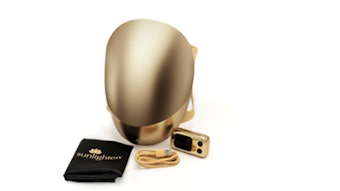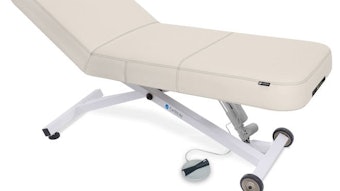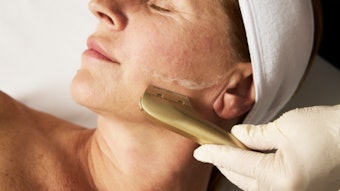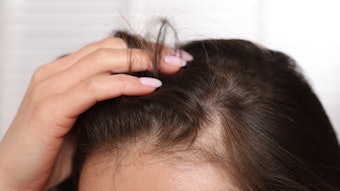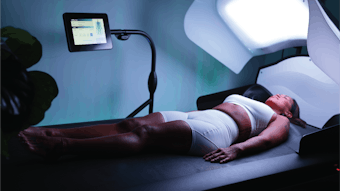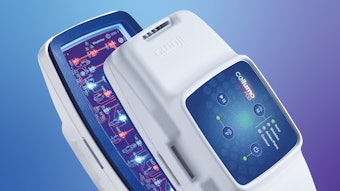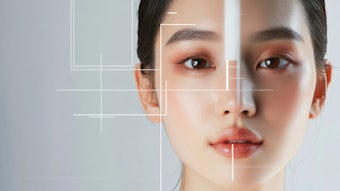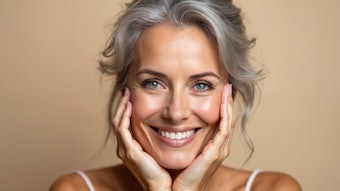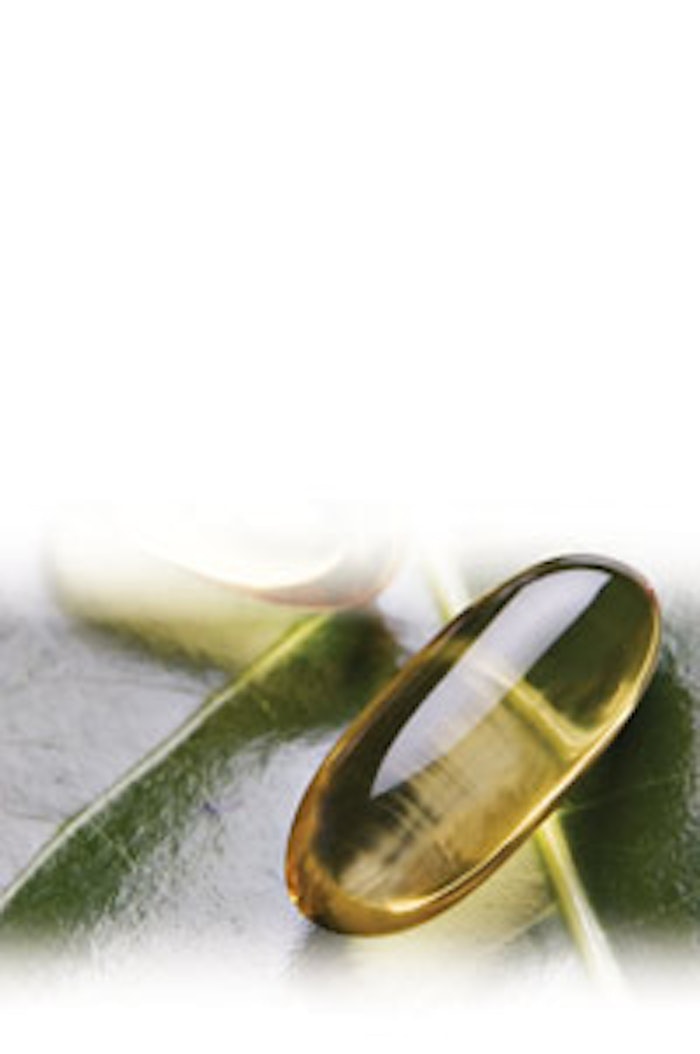
It’s no secret that when people look good, they feel good; however, the reverse is often true. By combining lifestyle changes, dietary counseling, proper supplementation, and modern services and technologies, patients are experiencing dramatic results. This is especially the case with those seeking help for acne and rosacea. By treating the whole body with a combination of clinically advanced skin care treatments, Eastern-inspired practices and holistic healing, patients feel and look better, and live healthier lives.
The whole picture
Before any treatment begins, it’s important for patients to sit down with a skin care professional for a one-on-one consultation to determine goals and discuss the changes they would like to see in their skin. During this personalized skin analysis, the esthetician should collect a detailed client history to pinpoint the most effective treatment plan.
Questions to ask include:
- How long has the patient been suffering from this condition?
- What kind of breakouts do they experience: papule, pustule, comedone or cyst?
- What kind of prescription medication do they take, including birth control pills?
- Do they wash their face in the morning and/or in the evening?
- What types of cleansing and moisturizing products do they use?
- Do they use a washcloth?
- What types of prescribed topical products have they used in the past?
- How often do they change their pillowcase?
- Do they pick at their pimples?
- Do they use sunscreen?
- Do they have any product sensitivities?
Precise as they are, these questions only cover part of the treatment. In addition, the patient’s eating habits, stress levels and exercise regimen should also be discussed to help determine what is going on inside the body.
From the inside out
After the initial consultation, patients should be offered the option of seeing a practitioner who specializes in health and lifestyle counseling, and who ideally is housed in your office. If you don’t have a nutritionist on staff, then find one you feel comfortable recommending, preferably in a nearby location. After meeting with several nutritionists, choose one or two you trust to provide internal support for your clients, and make sure they have a thorough understanding of what you are doing for the skin. The practitioner you work with needs to also take a holistic approach to nutrition and have a history of treating patients with acne or rosacea through diet and pharmaceutical-grade supplements. Also, find out their rates, whether they take insurance and what hours they are available to see clients. Some nutritionists are willing to offer 15-minute complimentary consultations if you are able to send them multiple referrals.
A pharmaceutical-grade supplement program is one of the first recommended additions or changes clients should incorporate in order to see improvements with their skin. Patients with digestive problems—often an issue for those with acne and rosacea—experience changes in their skin by taking probiotics and digestive enzymes. These help to maintain a healthy balance of intestinal, digestive and immune support. Probiotics are especially important if your client is or has been taking antibiotics. The fatty acids in evening primrose oil and fish oil have been found to reduce inflammation when taken internally. Be sure your clients are aware that, in order to achieve continuous results, the supplements should become part of their daily routine, making them healthier from the inside out. In addition, some clients opt for a more detailed evaluation that can include testing for food sensitivities or imbalanced hormone levels. However, it is important not to overwhelm your clients with too much information at once. Part of the education process is to engage the client and work with them to be successful.
Pharmaceutical-grade skin care products—including glycolic cleansers and moisturizers recommended for skin cell turnover, and benzoyl peroxide to reduce inflammation—should also be offered. From a business perspective, home care products are great for increasing the bottom line, while at the same time providing clients with what they want.
On the surface
When it comes to healing the skin from the outside, an important component of acne and rosacea treatment is photopneumatic therapy, which utilizes a vacuum that gently loosens dirt and oil from pores in conjunction with a broadband IPL light that kills bacteria. Unlike other light therapies for acne, this treatment, which can be performed by an esthetician, registered nurse or physician, is very comfortable for patients. (Editor’s note: It is always wise to check with your state board to make sure you are operating within your state guidelines. Contact information for every state’s cosmetology board.
To prepare skin for photoneumatic therapy, glycolic acid should be used at home by the client for 7–14 days before the treatment to begin the exfoliation of dead cells from the surface of the skin. During the first appointment, the skin is prepped with a 30% nonbuffered glycolic acid, which yields the best results with the light therapy since the pores are open and the dirt and oil are more easily vacuumed. Photopneumatic therapy is acceptable to continue while on antibiotics, although not encouraged. This is not the case with all IPL systems, so be sure to check with the manufacturer before performing any IPL treatment on individuals taking antibiotics. Isotretinoin use should be stopped three months before the service.
Severe acne vulgaris. Severe acne vulgaris, which consists of nodules and cysts, is deeply rooted in the skin and does not respond well to the vacuum on this IPL. If the inflamed lesion is deep and severe, it will, when squeezed or vacuumed, burst inside the skin tissue instead of at the surface. This will actually create scarring instead of making the acne better. These clients should avoid the photoneumatic therapy; they will experience the most benefits from food changes, taking supplements and using the proper home care products.
Pustular and comedonal acne. The protocols for pustular and comedonal acne are exactly the same. First, the face is cleansed with a mild glycolic cream cleanser, then hot towels are applied for one to two minutes in order to open the pores. The client’s eyes are protected with ocular shields and the light therapy begins. Two passes are performed over the infected areas, and then one to two spot treatments are performed. If there is inflammation, the client will feel some discomfort in those areas. Typically, there is minimal pain; it is very comfortable and all that is felt is a pinch and heat.
After the light therapy is completed, the skin is cleansed again with a gentle cleanser. Finally, hydrating and SPF lotions are applied, and the treatment is complete. The skin will be red and feel similar to a mild sunburn, but within 30 minutes to two hours, the skin looks and feels normal. Twenty-four hours after treatment, there will be noticeable improvement in the skin tone and levels of inflammation. Clients need to be advised against any extended sun exposure. For normal activities outside, the client needs a zinc oxide- or titanium dioxide-based sunscreen. A gentle cleanser and hydrating moisturizer should be used the night after the treatment. Glycolic products can be continued 24 hours after treatment.
Rosacea. This treatment works slightly differently for rosacea. It still utilizes the vacuum and IPL, however the heat from the light pulse reduces redness by using thermal energy to heat the skin’s surface to encourage blood flow. This strengthens the capillary wall and pushes the hemoglobin in the enlarged capillaries down to lower vascular structures where they cannot be seen. Extreme diffuse redness requires IPL therapy, whereas specific areas of bolder redness with defined borders may be treated with a long-pulsed laser. After several treatments, the client will have reduced redness and inflammation. The protocol for rosacea is the same, except a gentle cleanser is used during the first cleansing and no hot towels are applied to the face.
A noticeable improvement
The number of recommended treatments varies from 6–12 sessions, one every week. Because every client responds differently, there is no way to predict exactly how many will be needed. A general guideline to follow would be the worse the acne, the closer to the 12 treatments a client will need. After the appropriate amount of skin treatments has been completed, the client should return one month later for a followup visit, followed by another visit two months after that. At that point, instruct them to return as soon as they start to get a breakout in order to keep the acne under control. Some people need to come in once a month and others only twice per year to maintain the results.
Regardless of how many treatments the client ends up requiring, by combining holistic nutrition and photopneumatic therapy, most see noticeable improvement in post-inflammatory hyperpigmentation, less oily skin and a decrease in redness and the number of breakouts within 48 hours.

